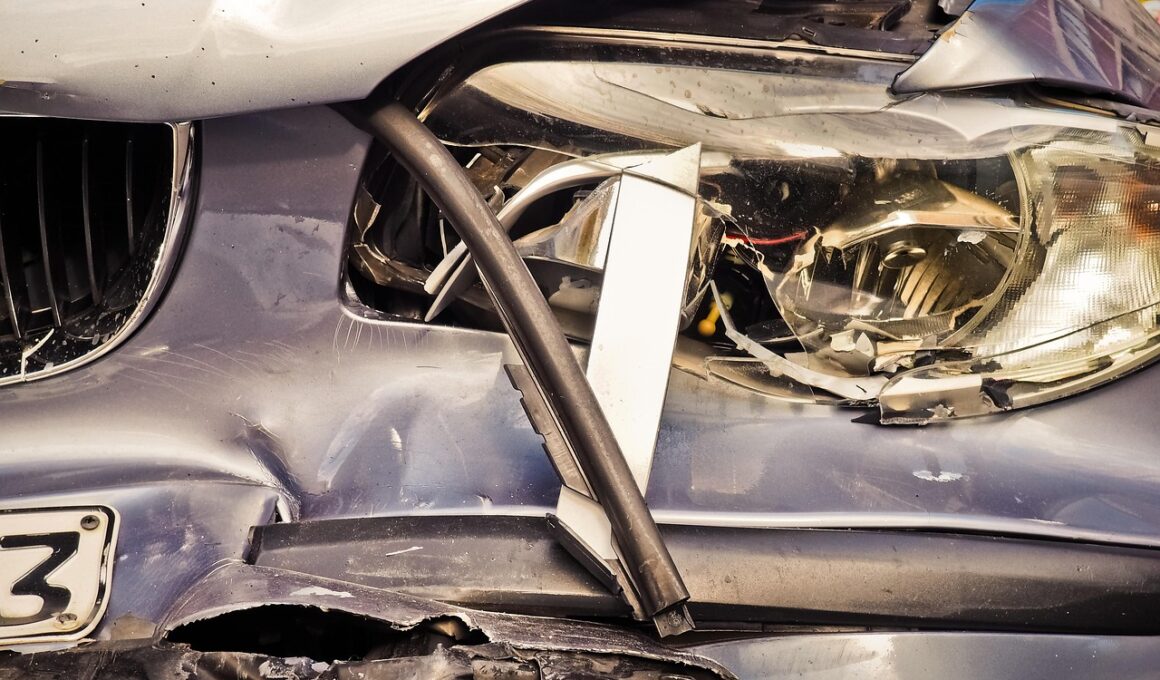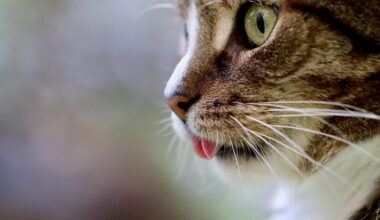What to Look for in a Cat Accident Insurance Policy
Choosing the right cat accident insurance policy can be quite daunting. It’s essential to consider various factors before making a decision. The first thing to keep in mind is the type of coverage offered. Policies will typically differ significantly, so carefully review the options. Comprehensive plans usually cover accidents such as injuries from falls, car accidents, or other mishaps. Additionally, check for exclusions; some policies may not cover specific conditions or activities. It’s wise to inquire about waiting periods too, as some policies may have time frames before coverage takes effect. Another crucial aspect is the reimbursement model. Companies often have different processes for reimbursing claims. Consider those that offer direct payments to veterinarians, as this can ease the financial burden immediately. Don’t forget to evaluate the premium costs, as this can vary by provider and specifics of coverage. Different breeds may command different premiums based on health assessments, so ensure you’re comparing like with like. Reading customer reviews can provide insights into the claims process and customer support.
Understanding Policy Inclusions
It is vital to fully understand what a cat accident insurance policy includes. Policies can significantly differ; therefore, knowing details like consultations, diagnostics, medications, and surgeries is key to making an informed decision. Some policies might include routine care or wellness benefits, though these are often separate from accident coverage. Coverage limitations are crucial to understand as well. Some policies might impose caps on payouts, which can become a critical concern in severe cases. Check for annual maximums or per-incident limits, which restrict the amount reimbursed after a claim. Furthermore, look for policies that have a lifetime cap, as these can limit how much you can claim over time. Emergency care is another significant factor to consider; knowing if emergency vet visits are covered can make all the difference when urgent care is needed. Additionally, consider the geographical limitations of the policy. Some providers might limit coverage to specific regions or facilities. Understanding these aspects will empower you to choose the right policy that best fits your needs and circumstances.
Another integral aspect to examine is the insurer’s reputation and reliability. Researching the insurance company’s track record can be revealing. Look into ratings from trusted sources such as the Better Business Bureau or insurance rating agencies. Customer testimonials often highlight satisfaction levels regarding claims processing and overall service. An insurer with a history of excellent service may be worth the premium you pay. Consider the customer service aspect as well. Dealing with pet emergencies can be stressful, so a company with responsive and friendly support can make the process smoother. You may also want to check their online presence; insurers offering seamless digital claims processes can simplify the entire experience. Accessibility of all terms and conditions is crucial, so ensure that the policy details are clear and understandable. Pay attention to hidden fees or ambiguous terms that could lead to unpleasant surprises during claims. Don’t hesitate to ask questions or seek clarity regarding any segment of the policy if you’re in doubt. A well-informed decision will mitigate potential issues down the road.
Comparing Different Providers
Comparing various providers is an essential step when evaluating cat accident insurance policies. Not all insurers are created equal, so dedicating time to vet options thoroughly is advisable. Gather quotes from multiple companies to understand the market rates. Use online comparison tools to streamline this process. These tools often allow for side-by-side views of coverage, premiums, and exclusions, making evaluation easier. When comparing providers, it’s essential to assess not only the cost but also the extent of coverage offered. A cheaper plan might not offer the necessary protection, leading to higher out-of-pocket expenses later. Pay special attention to the claims process; understanding how a provider handles claims will provide insights into future experiences. Always read the fine print to identify any possible pitfalls or restrictions in coverage. Networking with fellow cat owners can provide recommendations based on their experiences with specific insurers. Online forums or local pet communities can be invaluable resources. Solid research will ensure you choose an insurer that provides both quality care and peace of mind when faced with unexpected accidents.
Don’t disregard the importance of customizing your policy. Tailoring your cat accident insurance to meet your cat’s specific needs can maximize the benefits. For instance, if your cat has pre-existing conditions, finding customizable plans that address these is crucial. Some companies offer add-on options, which allow you to include specific types of coverage that may not be in the standard policy. This may include dental coverage or extended wellness visits. Ensure to evaluate these options extensively, as they can further the overall protection for your pet. Also, consider how your lifestyle impacts your pet’s risk factors. If you frequently travel or live in an active household, ensure your policy reflects that risk. Additionally, assess whether a policy allows for price adjustments depending on your cat’s age or health conditions. Regular healthy check-ups can decrease premiums, so be proactive. Furthermore, stay informed about any changes in policy terms that could affect your coverage. This could mean adjusting your policy to meet any new circumstances in your cat’s life, thereby ensuring you maintain adequate protection over time.
Additional Considerations for Cat Owners
There are various additional considerations for cat owners when selecting accident insurance. Owners should be aware of the policy’s flexibility and options for renewal. Policies should ideally have non-discriminatory renewal practices, meaning, the insurer shouldn’t raise premium costs due solely to your cat’s age or health status. Evaluating how different providers handle renewals can save you significant money as your cat ages. Additionally, consider the pet’s specific breed; some breeds are genetically predisposed to certain conditions that might be excluded from standard policies. Ensuring inclusive coverage for these breeds can prevent unforeseen veterinary expenses in the future. Remember that time-sensitive factors can impact your policy. Cats get older rapidly; hence you should acquire coverage while they are still young and healthy. Similarly, timely changes in life circumstances can affect your pet’s health and the insurance needs. Be aware of pet insurance regulations in your area, as they can affect the terms and responsibilities of any policy procured. Overall, gathering as much information as possible leads to making an informed choice that ensures adequate care for your beloved feline companion.
The claims process is an area that merits detailed attention when selecting a cat accident insurance policy. Customers should review how claims are submitted and the time frame for reimbursement. Some insurers require specific forms or documentation; understanding these requirements upfront will facilitate smoother claims. Consistent communication with your vet can also help, as they might have experience handling claims with various insurers. Additionally, knowing what documentation is needed, including medical records or invoices, is vital for timely processing. Reimbursement levels should align with your expectations, with policies ideally offering high percentages for medical expenses. Some plans might provide up to 90% reimbursement, while others may offer less. Understanding your financial responsibilities during the claims process is pivotal. Look for clarity regarding deductible amounts as well. A higher deductible lowers your premium but might lead to higher out-of-pocket costs when a claim arises. As small accidents can accumulate costs rapidly, ensure your budget aligns with potential medical expenses. Maintain a good record of your veterinary visits and care, which can help support your claims, ultimately leading to a successful resolution.
Finally, maintaining detailed records of your cat’s health history is an often-overlooked piece of the insurance puzzle. This includes vet visits, vaccinations, and any treatments received, especially for issues that may arise later. Such records will not only help in the claims process but can also assist in identifying patterns in your pet’s health. Keep these documents organized and easily accessible, as proactive owners often find themselves well-prepared for emergencies. Additionally, checking back with your insurer periodically can yield significant insights into new options or features. As companies evolve, they may offer enhanced benefits or changes in rates that could save you money. Don’t hesitate to reevaluate your policy as your cat’s needs may change over time. You might find altering your coverage options better suits your situation. Moreover, pet insurance regulations are continuously evolving, and remaining informed can empower your decision-making. Connect with local communities or online groups to exchange knowledge about the best practices in cat accident insurance. Being proactive and engaged ensures that your furry family members receive the best possible care, no matter where life leads you.


